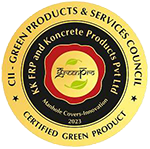In the quest for sustainable, durable, and efficient materials for municipal infrastructure, composites are emerging as a front-runner, promising to revolutionize urban and rural landscapes alike. Composites, materials made from two or more constituent materials with significantly different physical or chemical properties, are becoming increasingly vital in addressing the myriad challenges faced by municipal infrastructure today. Their unique properties offer solutions to issues ranging from durability and longevity to environmental sustainability and cost-effectiveness. This blog explores why composites are considered the future for municipal infrastructure.
Durability and Longevity
One of the most compelling reasons for the shift towards composites in municipal infrastructure is their superior durability and longevity compared to traditional materials like concrete, steel, and wood. Composites resist corrosion, withstand harsh weather conditions, and are less susceptible to wear and tear. This means that structures made from composite materials require less maintenance over their lifespan, significantly reducing long-term costs and extending the service life of infrastructure components such as bridges, water treatment facilities, and public transportation systems.
Lightweight and High Strength
Composites offer an exceptional strength-to-weight ratio, a critical factor in the construction and rehabilitation of infrastructure. Their lightweight nature facilitates easier and more cost-effective transportation and installation, especially in areas with difficult access or where heavy lifting equipment is not feasible. Moreover, the high strength of composite materials ensures that structures are capable of handling increased loads, making them ideal for applications such as pedestrian bridges, overpasses, and elevated roadways.
Environmental Sustainability
The environmental benefits of composites are manifold. Firstly, their durability and resistance to environmental factors mean that they have a longer lifespan, reducing the need for frequent replacements and, consequently, the environmental impact associated with manufacturing and disposing of infrastructure materials. Additionally, many composites are made from recycled materials and are themselves recyclable, contributing to a circular economy and reducing the carbon footprint of municipal projects. The energy efficiency of composites, due to their insulating properties, also plays a significant role in green building designs, further cementing their position as a sustainable choice for future infrastructure.
Design Flexibility
Composites offer unparalleled design flexibility, allowing for innovative architectural shapes and forms that would be difficult or impossible to achieve with traditional materials. This flexibility enables engineers and designers to create infrastructure that is not only functional but also aesthetically pleasing, enhancing the urban landscape. Furthermore, the ability to tailor the mechanical properties of composites to meet specific requirements means that infrastructure can be designed with optimal performance in mind, whether it’s a bridge engineered for maximum load-bearing capacity or a water treatment tank designed for chemical resistance.
Cost-Effectiveness
While the initial investment in composite materials may be higher than traditional materials, the overall lifecycle cost of composite infrastructure is often lower. The reduced maintenance, longer lifespan, and energy savings associated with composites contribute to significant cost reductions over time. Furthermore, the ease of installation and the potential for modular construction with composites can further reduce on-site labor costs and construction time, leading to more efficient project completion and lower indirect costs.
Conclusion
As municipal authorities grapple with the challenges of upgrading and expanding infrastructure in the face of growing urban populations, climate change, and tight budgets, composites present a compelling solution. Their durability, lightweight and high strength, environmental sustainability, design flexibility, and cost-effectiveness make them an ideal choice for a wide range of municipal infrastructure projects. Looking to the future, the adoption of composite materials is poised to play a pivotal role in building resilient, sustainable, and efficient urban and rural environments. The transition towards composite materials is not just a trend; it’s a necessary evolution in the way we think about and build our infrastructure for future generations.





